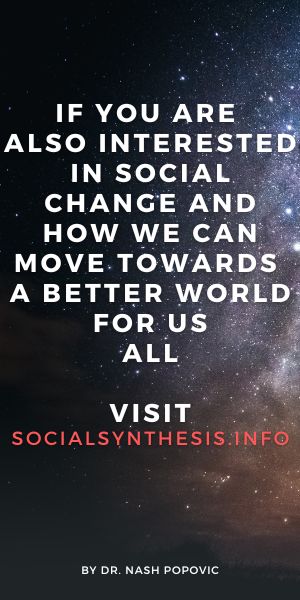PERSONAL DEVEOPMENT
Interaction With Others

Written by Nash Popovic
The importance of social connections is well known and well documented. Here, we will examine this topic specifically in relation to personal development and the life’s purpose.
- At the physical stage, others contribute to physiological homeostasis (through providing food, shelter and protection) as well as psychological (through hugs, cuddles, and other forms of physical connection). This is essential, particularly in infancy. Others also play a role in early development through encouraging and supporting bodily self-regulation (e.g. toilet training, learning to walk), as well as through exposure to a variety of stimuli, which incentivises learning and experience.
- At the conventional stage, others contribute to development through enabling language acquisition, and through the induction to various cultural mores (including art, religion, narratives, customs and so on). They contribute to harmonisation too, through the process of socialisation and role assignments. This enforces a sense of belonging and affirms newly formed constructs of the world and oneself.
- At the individual stage, others also play a role, albeit a more subtle one. Young people start developing individuality through bouncing their own ideas and choices against others – some resistance is needed to move on (we can walk only if the ground we walk on provides sufficient resistance – psychology is not very different). At the same time, others are used as a mirror, to confirm one’s existence and study the quite unstable and fragile newly-formed ego. So paradoxically, individuality often ends up in conformity to a group – albeit a group of one’s own choice.
- Regarding the transcendent stage, there is now mounting evidence supporting the commonly accepted wisdom that individuals and even whole groups can resonate. This can produce measurable effects at the time of heightened attention (see, for example, McTaggart, 2001, p.197-214)[1]. Expressions, such as ‘being on the same wave-length’ or ‘feeling in tune’ may be more than just metaphors. However, these are usually short lived, peak experiences – except, perhaps, for people at the transcendent stage of development. It can be expected that openness and sensitivity to this kind of resonance is a part of their regular repertoire.
Others, of course, can also have a negative effect on all the above, but as we are focusing here on development and harmonisation, the emphasis is on the positive aspects. From that perspective, there is one type of interaction that has a huge significance and deserves special attention – love.
[1] This should not be confused with a collective consciousness. That individual wave patterns may converge does not mean that they create a new consciousness.
Love
This word nowadays refers to many things (from loving personal partners, children and parents, to loving a particular type of food or activity). We define love here in a somewhat narrower sense, as the expression of a voluntary bond between sentient beings. Earlier on, we proposed that the meaning of life is creating the Other that will enter into interplay with the One. This actually implies two things: bonding and also separateness. Love enacts these two intertwined tendencies. The former may be what we normally have in mind when we think about love, but the latter is also important to prevent love from turning into a complete fusion. Let’s see how this plays out at different stages of development:
- At the physical stage, the bond of the bodies matters – sometimes for the purpose of reproduction, but not always (even among some primates, not just humans). Not surprisingly, bonding at this stage is mostly driven by the body chemistry and physical gratification. In the process, bodies get as close as it gets, but they can never completely fuse, and the urge to bond is soon followed by an urge to part, which secures separateness.
- At the conventional stage, bonding is socially constructed through institutions such as marriage and public rituals such as the wedding. Separateness is secured by accompanied divisions of social roles (mostly between male and female members of the union). It should be also noted that bonding at this stage often has an instrumental end (e.g. forming alliances or increasing wealth).
- What matters at the individual stage is bonding of the egos (and the ensuing personal attachment). Love becomes a question of personal taste, so infatuation, or falling in love is highly valued. Infatuation actually appeared much earlier and has an evolutionary purpose. To secure a good mix of genes, species need to mate with ‘strangers’. But strangers normally invoke mistrust and anxiety. To overcome these off-putting feelings, an even stronger attractive emotion needed to evolve. Not surprisingly, infatuation is very seductive and gets glorified when people are able to act upon it. However, infatuation is a kind of dead-end, as it is not designed for a long term relationship that many humans aspire to. This is why relationships at this stage are quite unstable (passion is rarely enough to sustain them), even though the bonding can be very strong. Separateness is secured by the impossibility of minds fully merging, and also by an innate need at this stage to preserve some autonomy.
- The characteristic of transcendent love is that it is less specific: not only does it depend less on personal preferences, but it also doesn’t need a specific object. The person at that stage can love, without necessarily having to focus that love on somebody – this love can go beyond loving an individual. Perhaps a fitting name for it is compassion, which can be defined as a non-judgemental approach to others. When we don’t judge others (in a negative or positive way), we recognise how much we have in common with them, which creates spontaneous bonding. Separation at this stage is secured by separate selves and souls. This needs a further clarification: although souls do not completely fuse, they can bond during physical life at any stage. Such a bond goes beyond the body and mind, so it can indeed transcend illness, old age or death. Eternal love may indeed be possible – providing that those involved can remain in the after-death environment (otherwise they may get separated again in the material world). The transcendent stage increases the chances of remaining there. So, let’s see what might happen beyond physical reality.
It can be said that love is the road to fulfilling purpose and if so, it must continue beyond physical life. To become the Other, the counterpart to the One, individual selves eventually have to merge too. The only appropriate way to achieve this is through the act of love. Love is the force that enables this process. However, not despite, but precisely because of it, this ultimate act is also a most hazardous event, which is not only recognised in spiritual traditions, but its echo reaches common experiences too. Love is highly valued and desired, but it is often linked to death and a sense of annihilation. This is because the final merging requires a merging not only of souls but of selves too, which is a highly delicate process. If, at the moment of merging, there is a shred of desire for control, fear, or inequality, the result could be a moment of panic that can lead to one soul assimilating or being assimilated by another, rather than merging together. This is why trust and equality are so important. As we are all preparing for that ultimate act of love, the same qualities are important in earthly life too (particularly from the individual stage onwards). However, the merging of selves and souls cannot happen in material reality. Souls that still identify with bodies are not yet ready for such an act. In fact, this final unification does not even happen at the early stages of non-material life, but usually only at the later ones. And yet, the journey of love starts much earlier.
It may be hard to believe, but we are all already a part of this long voyage. Throughout 3.77 billion years of evolution, separateness has predominated (as demonstrated in souls building more and more rings) and love was slowly developing in its shadow. However, at some point in evolution, a U-turn needs to take place when love, bonding together, will become more important, while separateness will gradually fade away, until the purpose of life is fulfilled.

So, when can we expect this U-turn? Now, in the first half of the 21st century. This is a big claim – similar claims have been made in the past and they didn’t deliver. To make a case for it, we will turn to the last chapter of these materials – social development.

